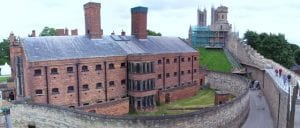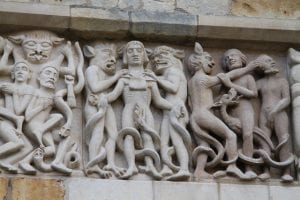This month is LGBTQ+ History Month.

This year the theme is Peace, Activism and Reconciliation.
The University of Lincoln Library has produced a reading list with recommended fiction and non-fiction titles for students to explore.
For background information
The Forum for Sexual Orientation and Gender Identity Equality in Further and Higher Education have produced a useful timeline https://lgbthistorymonth.org.uk/wallchart/ ‘Voices and Visibility’ to uncover the hidden history of LGBTQ+ people, laws and campaigns that have occurred since the 1800s.
Stonewall https://www.stonewall.org.uk/ also produce useful material and provide help and advice for people coming out. They also have a Glossary of Terms https://www.stonewall.org.uk/help-advice/glossary-terms
Locally, Just Lincolnshire https://www.justlincolnshire.org.uk/ (Lincolnshire’s Equality and Human Rights Council) provides information on local support.
Lincolnshire’s past
There were some notable events in Lincolnshire history which highlight the historical context of LGBTQ+ issues today.
For the following examples and for the study of local history generally, the Special Collections at the University of Lincoln include material owned by the Cathedral or at the Lincolnshire Archives. To access both collections you can search the Special Collections catalogue https://specialcollections.library.lincoln.ac.uk/CalmView/
To access the history databases at the University of Lincoln, a good starting point is the Subject guide https://guides.library.lincoln.ac.uk/history
A key resource is Gale Primary Sources https://guides.library.lincoln.ac.uk/artemis ; a historical research tool which allows you to search across multiple collections of primary source documents (newspapers and archive collections).
Execution for sodomy
Lincoln Castle was the site of execution for three men convicted of sodomy on Wednesday 2 April 1823.
‘Arden, Candler, and Doughty, the three men convicted at the assizes of unnatural crimes, who were left for execution at Lincoln, underwent the sentence of the law, on the drop at Lincoln Castle, on Friday last. – They died penitently.’’ (The Derby Mercury, 1823)

© Copyright Len Williams and licensed for reuse under this Creative Commons Licence.
A facsimile of the original issue of the Derby Mercury is available on the Library database Gale Primary Sources https://guides.library.lincoln.ac.uk/artemis and there are other references to the execution in the Morning Post (London) where it is stated that Doughty’s body was taken to Grantham, and Arden’s and Candler’s were interred in St. John’s Church yard, Newport, Lincoln. It was also reported in the Parliamentary Proceedings.
It wasn’t until 1861 that the death penalty for buggery was abolished, and later, the decriminalisation of homosexual acts by two men over the age of 21 ‘in private’ did not occur until 1967 in England and Wales (and 1980s in Scotland and Northern Ireland).
Lincoln Castle was constructed during the late 11th century by William the Conqueror on the site of a pre-existing Roman fortress. The castle is unusual in that it has two mottes. It remained in use as a prison and law court into modern times, and is one of the better preserved castles in England; the Crown Courts continue to this day. It is open to the public as a museum.
Carved 12th century frieze on Lincoln Cathedral
The carved frieze of Lincoln Cathedral, which dates to the mid-twelfth-century, features a panel showing punishments for sodomy. The original panel, made from Ancaster limestone, can be seen in St James’s Chapel within the cathedral, but a restored version made from the less porous Lincoln limestone, was installed in 2001. The new panel was carved in the 1990s by the late stone sculptor, John Roberts. It shows two males being forced by a demon to perform an act of anal or interfemoral penetration.

© Copyright J.Hannan-Briggs and licensed for reuse under this Creative Commons Licence.
Lincoln Cathedral’s full name is Cathedral Church of the Blessed Virgin Mary of Lincoln, or sometimes St. Mary’s Cathedral. Established c1072-1092 by Bishop Remigius. The cathedral is Grade I listed.
Nicholas Chamberlain – first CoE bishop to come out (2016)
Nicholas Chamberlain became the first bishop in the Church of England to come out as gay, which occurred following threats of an outing from an unnamed Sunday newspaper. He said he lived with his partner in a celibate same-sex relationship, as required by the Bishops’ guidelines, under which gay clergy must practice abstinence and may not marry.
This was reported in the Guardian:
Chamberlain (born 1963) became the suffragan Bishop of Grantham on 19 November 2015. The Bishop of Grantham is an episcopal title used by a suffragan bishop of the Church of England Diocese of Lincoln, in the Province of Canterbury. The title takes its name after the market town of Grantham in Lincolnshire.
Lesbian protest in Skegness (1971)
Between 15 – 17 October 1971 a group of lesbians invaded the platform of the Women’s Liberation Movement (WLM) Conference in Skegness, demanding recognition.
(Some sources claim the Skegness conference took place in 1972 but that year it was held in Manchester). The WLM held national conferences between 1970 and 1978, and many local, national and regional conferences also took place.
An ‘Advanced search’ on the Library databases finds ‘An archive of the women’s liberation movement: a document of social and legislative change’. The paper in the journal ‘Legal Information Management’ from 2009 offers an introduction to the material available to researchers from the ‘Sisterhood and after: an oral history of the women’s liberation movement’ archive at the British Library https://www.bl.uk/sisterhood
References
The Derby Mercury. (2 April, 1823) Wednesday’s post. Issue 4734. British Library Newspapers. Available from http://tinyurl.galegroup.com/tinyurl/978CdX. [accessed 13 Feb. 2019].
Russell, P. (2015) An archive of the women’s liberation movement: a document of social and legislative change. Legal Information Management, 15(1) 31. Available from https://proxy.library.lincoln.ac.uk/login?url=https://search.ebscohost.com/login.aspx?direct=true&db=edb&AN=101644724&site=eds-live&scope=site [accessed 13 February 2019].